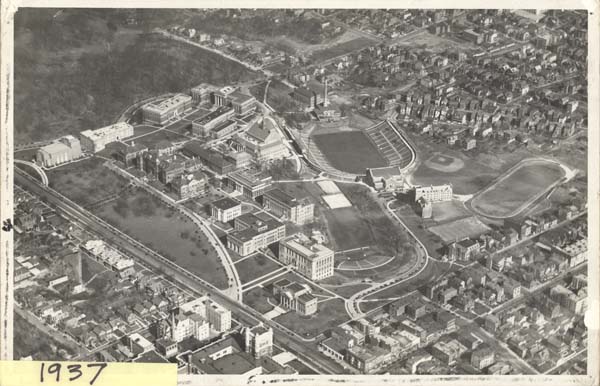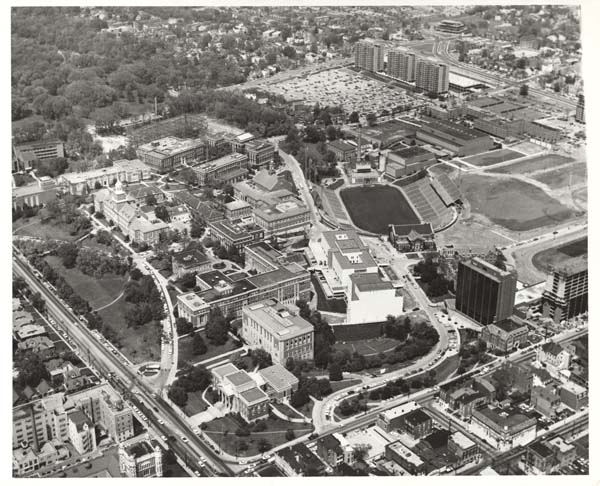By: Iman Said, ARB Intern, 2014-2015
Last year, Morgens Hall reopened its doors as one of the nicest residence halls on campus. It had spent about a year in renovations that replaced the brick building with floor to ceiling glass and removed the balconies to allow for more interior space. With renovations for Scioto Hall scheduled to begin next year, I thought I would take this opportunity to talk about how fluid campus is.
Looking through the photos gives me an opportunity to view campus across decades. When the Cincinnati College was first founded in 1819, it comprised a single building in downtown Cincinnati, a far cry from our UC, which was founded in 1870 and later absorbed the last remaining academic programs of Cincinnati College, hence our birthdate of “1819.” To be accepted into the college, students had to demonstrate knowledge of both Latin and Greek, as well as a comprehensive understanding of the philosophies of Homer, Aristotle, and other great classical thinkers. While at Cincinnati College, the students would continue their studies in those areas. Many of them worked with the College of Medicine, which had been founded the same year. As the decades went by on, more and more colleges became part of the University of Cincinnati. To learn a bit more about UC’s gathering of colleges, go to the capsule histories of them at http://magazine.uc.edu/favorites/fun/briefhistory.html.
Many may consider the evolution of the University as a natural, inexplicable occurrence that perhaps bears no significance. To me, the progression from Cincinnati College to a respected research institution is indicative of the change in expectations and traditions regarding higher education. For example, an engineering program was formed in 1874 to a great deal of controversy. Many considered the study of engineering to be plebian in nature, not befitting of the classical studies college students customarily engaged in. The controversy came to a head when the co-op program was formed by former Dean Herman Schneider with full designation of the engineering department as a college in 1905. Several administrative officials and community partners worried that the actual practice of engineering would detract from the reputation of the university. Today, the College of Engineering and Applied Science and the co-op program are celebrated around the world.
Similarly, there is a very fascinating photo of campus from around the 1970s. It looks like a fairly typical image, not much is different, except for one small aspect. Instead of the large green space known as Sigma Sigma Commons, there is a parking lot. From its relocation from the lower Clifton hillside property of Charles McMicken to its current Burnet Woods location in 1895, there was initially a single building, the original McMicken Hall. Later the Van Wormer Library was added to campus, along with the wings to McMicken: Hanna and Cunningham Halls (with the demolition of the first McMicken Hall and construction of the current one in 1950, the “wings” were joined with it into one building). Throughout the 1940-1970s, UC was primarily a commuter campus, which means most students had to drive to school for classes. Later, the UC Master Plan called for an increase in the amount of green space on campus. The parking lot was subsequently ripped up and replaced with the rolling hills and open areas that students currently enjoy.
No one really knows what our campus will look like in the future. And for the most part, no one really knows what it was like to study on a campus with very little green space, or for that matter, a campus that consisted of one building. We can only imagine the stories.


